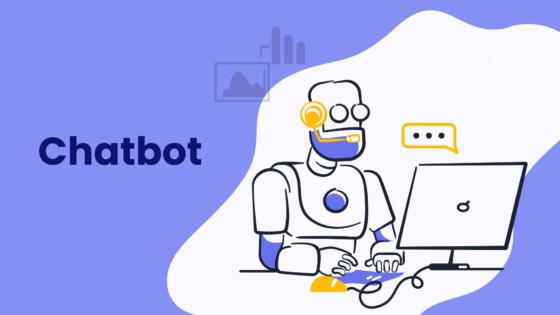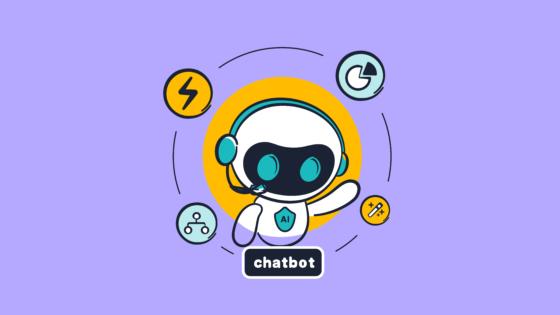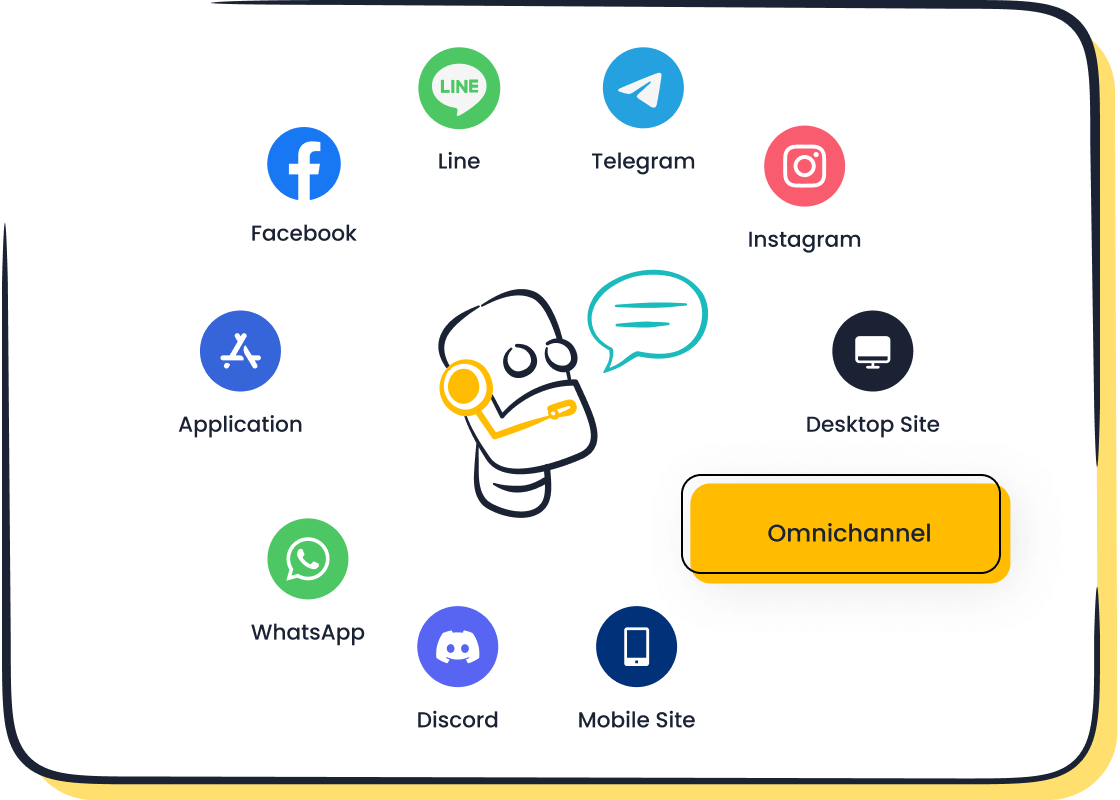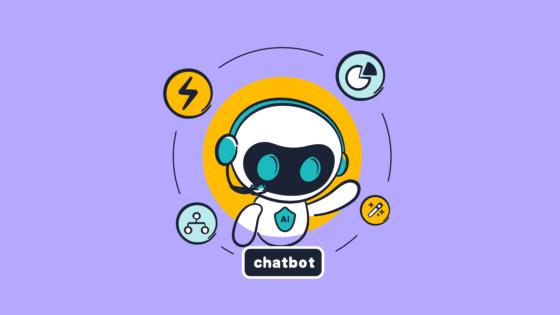The Essential Guide to 2 Types of Chatbots for Starters

You might wonder, what are the 2 types of chatbots? The answer is simple: rule-based chatbots and AI chatbots. Knowing the difference helps you pick the right tool for your customer service or ecommerce goals. Many businesses see big gains—92% report improved efficiency, and 69% of people prefer chatbots for quick answers.
| Industry / Aspect | Key Statistics & Adoption Rates |
|---|---|
| Customer Service | 92% of businesses report improved efficiency with chatbots. |
| Ecommerce & Retail | 83% of shoppers more likely to buy with chatbot help. |
When you start exploring chatbot options, choosing between the 2 types of chatbots can feel confusing. Sobot makes it easy. Sobot AI and the Sobot call center offer user-friendly solutions that match your needs, even if you’re just starting out.
2 Types of Chatbots

When you start looking into chatbots, you’ll quickly see that there are 2 types of chatbots you’ll hear about most: rule-based chatbots and ai chatbots. Each type works in its own way and fits different business needs. Let’s break down what makes them unique, so you can decide which one matches your goals.
Rule-Based Chatbots
Rule-based chatbots are the simplest kind. You set up rules, and the chatbot follows them. If a customer asks a question, the chatbot checks your rules and gives the answer you programmed. These bots use “if-then” logic. For example, if someone types “What are your hours?”, the chatbot replies with your business hours.
Here’s how rule-based chatbots work for you:
- You create a list of questions and answers.
- The chatbot matches what the customer types to your list.
- If it finds a match, it gives the answer. If not, it might say, “Sorry, I don’t understand.”
Tip: Rule-based chatbots are great for answering FAQs, booking appointments, or guiding users through simple steps.
Key features of rule-based chatbots:
- They use decision trees and if-then logic.
- You can set them up quickly, even if you’re new to chatbots.
- They don’t learn from conversations. You need to update them if you want them to answer new questions.
- They work best for predictable, straightforward tasks.
Why choose a rule-based chatbot?
- You want fast setup and easy control.
- Your customers ask the same questions over and over.
- You need a chatbot that’s easy to maintain for simple tasks.
How rule-based chatbots help beginners:
- You don’t need to know how to code.
- You can launch your chatbot in just a few hours.
- You get a predictable experience for your customers.
Sobot offers rule-based chatbots as part of its all-in-one contact center platform. You can set up your own rules and automate common questions, saving your team time and effort.
AI Chatbots
AI chatbots take things to the next level. These bots use artificial intelligence, machine learning, and natural language processing (NLP) to understand what people mean, not just what they say. Instead of following strict rules, ai chatbots learn from every conversation. They get smarter over time and can handle more complex questions.
Here’s what makes ai chatbots different:
- They understand context and intent, not just keywords.
- They can answer a wide range of questions, even if you didn’t program every answer.
- They learn from each chat, so they improve as more people use them.
- They support multiple languages, making them perfect for global businesses.
Note: AI chatbots are ideal if you want your chatbot to sound more human and handle tricky or unexpected questions.
How ai chatbots work for you:
- You train the chatbot with examples and data.
- The chatbot uses AI to figure out what the customer wants.
- It gives answers based on what it has learned, not just on fixed rules.
Why choose ai chatbots?
- You want your chatbot to handle complex, changing conversations.
- Your business gets lots of different questions.
- You want to offer 24/7 support in many languages.
Sobot’s ai chatbots stand out because they combine advanced AI with easy setup. You don’t need to write code. Just use the point-and-click interface to build your ai-powered chatbot. Sobot’s ai chatbots work across channels like WhatsApp, SMS, and live chat. They help you serve customers anytime, anywhere.
Comparing the 2 Types of Chatbots
Let’s look at the main differences between rule-based chatbots and ai chatbots. This table makes it easy to see which type fits your needs:
| Characteristic | Rule-Based Chatbots | AI Chatbots |
|---|---|---|
| Operation | Follow predefined rules and decision trees | Use machine learning and natural language processing (NLP) |
| Development Complexity | Simpler to develop, based on if-then logic | More complex, requires expertise in ML and NLP |
| Context Understanding | Limited, only immediate conversation context | Understands context and intent, adapts to changing user needs |
| Maintenance | Manual, labor-intensive as new scenarios require programming | Less manual maintenance, self-improves through learning |
| Deployment Speed | Quick deployment for simple tasks | Longer initial training but better long-term adaptability |
| Flexibility | Rigid, struggles with complex or dynamic conversations | Highly adaptable, handles complex and dynamic interactions |
| User Experience | Can be frustrating due to limited responses | Provides natural, personalized, and context-aware interactions |
| Scalability | Challenging to scale due to rule proliferation | More scalable, handles wider range of queries without proportional complexity |
| Cost Efficiency | Initially cheaper but costly to maintain | Higher initial cost but cost-effective over time due to reduced manual updates |
| Accuracy | Limited to predefined rules, struggles with ambiguous queries | Improves accuracy over time by learning from interactions |
You can see that rule-based chatbots are perfect for simple, repetitive tasks. Ai chatbots shine when you need flexibility, natural conversations, and support for many languages.
Sobot’s Expertise in Both Types
Sobot gives you the best of both worlds. You can start with a rule-based chatbot for quick wins. As your business grows, you can upgrade to ai chatbots for smarter, more natural conversations. Sobot’s platform lets you switch or combine both types, so you never outgrow your chatbot solution.
Here’s why Sobot stands out:
- Sobot’s all-in-one platform supports both rule-based and ai chatbots.
- You get omnichannel support, so your chatbot works on chat, email, voice, and social media.
- Sobot’s ai-powered chatbots use advanced AI, including generative AI and secure data handling.
- You can customize your chatbot for your industry, whether you’re in retail, finance, gaming, or education.
- Sobot offers lower pricing and more transparent service than many other providers.
Did you know? Sobot’s ai chatbots helped OPPO, a global smartphone brand, reach an 83% chatbot resolution rate and a 94% positive feedback rate. That’s the power of combining smart technology with real business needs.
Quick Facts: Rule-Based vs. AI Chatbots
- Rule-based chatbots are easy to set up and manage. They’re best for FAQs and simple tasks.
- Ai chatbots handle complex, dynamic conversations. They learn and improve over time.
- Sobot lets you use both types, so you can start simple and grow smarter.
If you’re just starting out, think about your business needs. Do you want fast answers to common questions? Try a rule-based chatbot. Do you want your chatbot to understand and adapt to your customers? Go for ai chatbots.
Pro Tip: You don’t have to choose just one. Many businesses use both types of chatbots together for the best results.
The 2 types of chatbots give you flexibility and control. With Sobot, you can build a chatbot that fits your business today and grows with you tomorrow. Whether you need a simple rule-based chatbot or a powerful ai-powered chatbot, Sobot has you covered.
Rule-Based Chatbots in Customer Service
How They Work
You might wonder how chatbots actually help with customer service. Rule-based chatbots follow a set of instructions you give them. Think of them as digital assistants that answer questions using a script. When a customer types a question, the chatbot checks its list of rules and gives a reply. If someone asks about store hours, the chatbot finds the answer you set up and shares it right away.
This type of chatbot works best for simple, repeated questions. You don’t need to know how to code. You just set up the questions and answers in advance. The chatbot then handles these automated interactions, making customer service faster and easier for everyone. Sobot’s platform lets you build these chatbots with a point-and-click interface, so you can launch them quickly and keep your customer communication smooth.
Tip: Rule-based chatbots are great for handling FAQs, booking appointments, and guiding customers through basic steps.
Best Use Cases
Rule-based chatbots shine in industries where customer service needs are predictable. They help you answer common questions, reduce wait times, and keep your team focused on more complex tasks. Here’s a table showing where you’ll see rule-based chatbot use cases most often:
| Industry | Common Scenarios and Use Cases |
|---|---|
| Customer Service | Handling inquiries and FAQs, providing 24/7 support to reduce human workload. |
| E-Commerce | Managing order statuses, returns, cart reminders, shopping assistance. |
| Healthcare | Scheduling appointments, recording patient info, medication reminders. |
| Travel | Booking management, travel info, routine queries. |
| Telecom | Diagnostics, fraud alerts, handling common issues. |
| Government | Answering questions, directing users, form filling. |
| Retail & E-Commerce | Conversational commerce, product suggestions, internal communication. |
| Real Estate | Repetitive questions, virtual tours, lead generation. |
| Education | Course info, registration, reminders, virtual tutoring. |
| Manufacturing | Communication among contractors, suppliers, customers, and partners. |
| Banking & Insurance | Reducing wait times, fraud reporting, upselling, notifications. |
You’ll notice that rule-based chatbots work best when customer service needs are clear and repetitive. They boost engagement by giving fast answers and keeping customers happy. But they do have limits:
- Rule-based chatbots rely on scripts, so they can’t handle unexpected or complex questions.
- They don’t learn from conversations, so you need to update them as your business grows.
- Personalization is limited, which can affect customer engagement.
- If a customer asks something outside the script, the chatbot may need to hand off to a human agent.
If you want to improve customer service with simple, reliable automation, rule-based chatbots are a smart place to start. Sobot helps you set up these chatbots quickly, so you can focus on building better customer engagement and smoother customer communication.
AI Chatbots by Sobot

How AI Chatbots Work
You might wonder how ai chatbots actually understand what you say. These smart bots use natural language processing (NLP) and machine learning to figure out your intent and respond in a way that feels human. When you send a message, the ai-powered chatbot breaks down your words, looks for meaning, and decides how to reply. Here’s what happens behind the scenes:
- You type or speak your question.
- The chatbot analyzes your message using NLP.
- It identifies your intent and pulls out important details.
- The ai chatbots search their database or generate a new answer.
- You get a reply that matches your needs.
These steps help ai chatbots handle complex questions and keep conversations flowing. They learn from every chat, so they get better over time. Sobot’s ai-powered chatbots use supervised and unsupervised learning, predictive analytics, and sentiment analysis. This means your chatbot can recognize patterns, understand emotions, and improve with feedback.

Sobot Chatbot Features
Sobot’s ai chatbots stand out because they offer features that make your life easier. You get 24/7 automated customer support, so your business never sleeps. The chatbot speaks multiple languages, which helps you connect with customers worldwide. You don’t need to know how to code—just use the visual bot builder to set up your ai-powered chatbot.
| Feature | What You Get |
|---|---|
| Omnichannel Support | Chat on websites, apps, social media, email, phone, and more |
| Multilingual | Serve customers in their preferred language |
| No Coding Needed | Build and customize your chatbot with a simple point-and-click interface |
| Security & Compliance | Data encryption, global certifications, and regional data centers for privacy |
| Smart AI Capabilities | Generative AI, personalized recommendations, and human-like voice interactions |
OPPO, a global smartphone brand, used Sobot’s ai chatbots and saw an 83% resolution rate and a 57% boost in repurchase rate. The chatbot helped OPPO deliver seamless, personalized experiences across all channels.
Sobot’s ai chatbots integrate easily with ecommerce platforms, CRMs, and business tools. You can scale your chatbot as your business grows. Advanced security features keep your data safe, so you can focus on building great customer relationships.
Comparing the 2 Types of Chatbots
Key Differences
When you look at rule-based chatbots and ai chatbots side by side, you’ll notice some big differences in how they work and what they can do for your business. Here’s a simple table to help you see the main points:
| Aspect | Rule-Based Chatbots | AI-Powered Chatbots |
|---|---|---|
| Core Functionality | Operate on predefined rules and keyword matching | Use machine learning and natural language processing (NLP) |
| Interaction Style | Rigid, limited to fixed knowledge base | Dynamic, conversational, human-like |
| Adaptability | Cannot learn or adapt; fixed responses | Learns from interactions and feedback, improves over time |
| Handling Language Nuances | No understanding of context or intent | Understands context, intent, synonyms, spelling errors |
| Complexity and Implementation | Simple, easy, cost-effective | Complex, requires advanced technology and setup |
| Suitability | Best for simple, narrow use cases | Suitable for complex, evolving communication needs |
| User Experience | Limited, rigid, less satisfying | More natural, engaging, and effective |
You can see that rule-based chatbots stick to scripts. They answer questions you expect, like store hours or order status. Ai chatbots, on the other hand, use smart technology to understand what people really mean. They can chat in a way that feels more human and handle tricky questions. This makes ai chatbots a great choice if you want to boost engagement and offer a smoother customer service experience.
When it comes to cost, rule-based chatbots usually have a lower starting price. Many small businesses pay between $0 and $50 per month for a basic chatbot. Ai chatbots can cost more, with monthly fees ranging from $100 to $1,000, but they offer more advanced features and higher engagement potential. You can check out more details on chatbot pricing.
Strengths for Beginners
If you’re just starting out, you might wonder which type of chatbot fits your needs best. Here’s a quick look at what makes each option strong for beginners:
-
Rule-Based Chatbots:
- Easy to set up and control, even if you’ve never used a chatbot before.
- Quick to build and launch, so you can start improving customer service right away.
- Low cost, making them perfect for small businesses or anyone with a tight budget.
- Great for handling FAQs, booking, and simple tasks without needing any AI training.
- You can manage and update them easily as your business grows.
-
AI Chatbots:
- Offer flexible, human-like conversations that keep customers engaged.
- Learn from every interaction, so they get better at answering questions over time.
- Support multiple languages, which helps you reach more customers.
- Work well with your other business tools, like CRMs and marketing platforms.
- Hybrid options let you combine rule-based and ai chatbots for the best of both worlds.
Tip: Many businesses start with a rule-based chatbot and then add ai chatbots as their needs grow. Sobot makes this transition simple, so you can scale your customer service and engagement without stress.
With Sobot, you get access to both types of chatbots in one platform. You can start small and grow smarter, all while keeping your customers happy and your engagement high.
Beginner’s Guide to Choosing a Chatbot
Choosing the right chatbot can feel overwhelming, especially if you’re new to the world of automation. This beginner’s guide will walk you through the steps to make your chatbot implementation smooth and successful. You’ll see how easy it is to get started and how Sobot supports you every step of the way.
Step-by-Step Selection
Ready to pick your first chatbot? Here’s a simple process you can follow:
-
Pick Your Niche and Audience
Decide who your chatbot will help. Are you focusing on customer support, sales, or maybe booking appointments? Knowing your audience helps you set clear goals. -
Identify Your Main Problems
List the tasks you want to automate. Common examples include answering FAQs, capturing leads, or sending reminders. -
Set Your Goals and Must-Have Features
Write down what you want your chatbot to do. Do you need rules-based logic, AI-powered responses, or both? Think about features like live chat, analytics, or integration with your CRM. -
Check Platform Usability
Look for a platform that’s easy to use. No-code tools with drag-and-drop builders are perfect for beginners. Make sure there are templates and tutorials to help you get started. -
Consider Customization and Branding
Your chatbot should match your brand’s style. Choose a platform that lets you adjust the look, tone, and conversation flow. -
Review Analytics and Support
Basic analytics help you track how well your chatbot performs. Good customer support makes a big difference if you get stuck.
Tip: Many platforms offer free plans, so you can test features before you commit. Always check what’s included in each plan.
Sobot’s Support for Beginners
Sobot makes chatbot implementation easy for everyone, even if you have zero coding experience. You get a drag-and-drop interface and ready-made templates for common tasks like lead generation or FAQs. You can build your chatbot in just a few hours, not days.
Sobot lets you upload documents or type in Q&A pairs to quickly create a knowledge base. If you need extra help, Sobot’s knowledge operation team can help you set up your chatbot and keep it running smoothly. You can also book a demo meeting with Sobot’s experts, who will guide you based on your business needs.
Sobot’s customer support is always available online. You can ask questions, get advice, and even receive ongoing tips to improve your chatbot. This hands-on approach means you never feel lost during chatbot implementation.
Did you know? Sobot’s user-friendly tools and expert support help thousands of businesses launch their first chatbot with confidence. You can join them and see how easy automation can be.
You’ve seen how rule-based and AI chatbots differ. Rule-based chatbots give you quick setup and predictable answers. AI chatbots learn and adapt, offering more natural conversations. Check out this table for a quick recap:
| Best For | Rule-Based Chatbots | AI Chatbots |
|---|---|---|
| Setup Speed | Fast | Slower |
| User Experience | Consistent | Engaging |
| Scalability | Basic | Advanced |
Sobot’s solutions scale with your business, from startups to enterprises. Ready to boost customer satisfaction? Try Sobot’s chatbot platform and see how easy automation can be.
FAQ
What is the main difference between a rule-based chatbot and an AI chatbot?
A rule-based chatbot follows set rules you create. An AI chatbot uses artificial intelligence to understand what you mean and learns from conversations. Sobot offers both types, so you can pick what fits your business best.
Can I use a chatbot for my small business if I have no coding skills?
Absolutely! Sobot’s chatbot platform lets you build both rule-based chatbots and AI chatbots with a simple point-and-click interface. You don’t need to write any code. Many small businesses start this way and see great results.
How does a chatbot help improve customer satisfaction?
A chatbot answers questions instantly, even at night or on weekends. For example, Sobot’s AI chatbot helped OPPO reach an 83% resolution rate and a 94% positive feedback rate. Fast replies make customers happy and keep them coming back.
Is it possible to use both rule-based and AI chatbots together?
Yes! You can combine a rule-based chatbot for simple tasks and an AI chatbot for complex questions. Sobot’s platform lets you blend both, so your chatbot grows with your business needs.
Tip: Many companies start with a rule-based chatbot, then add AI chatbot features as they grow. This approach saves time and money.
See Also
How To Select The Ideal Chatbot Software Solution
Simple Steps To Add Chatbot Examples On Websites
Building A Chatbot That Drives Website Success
